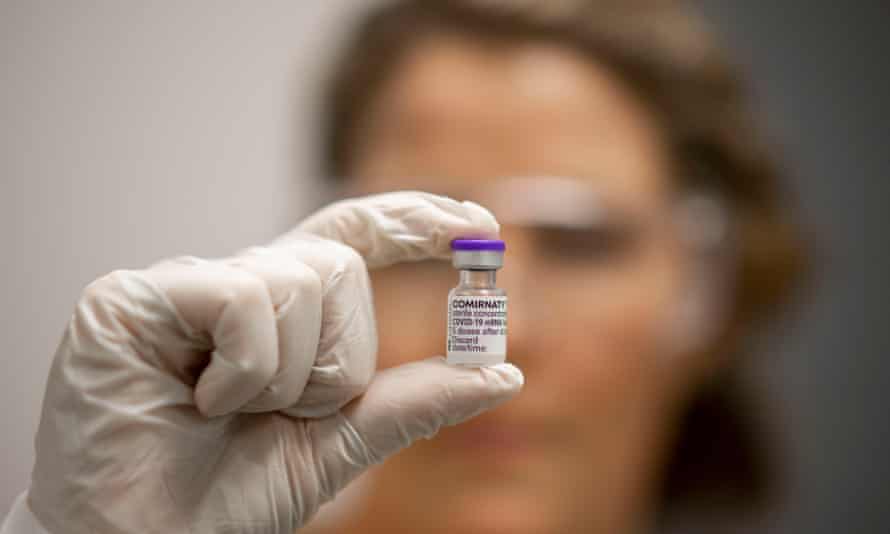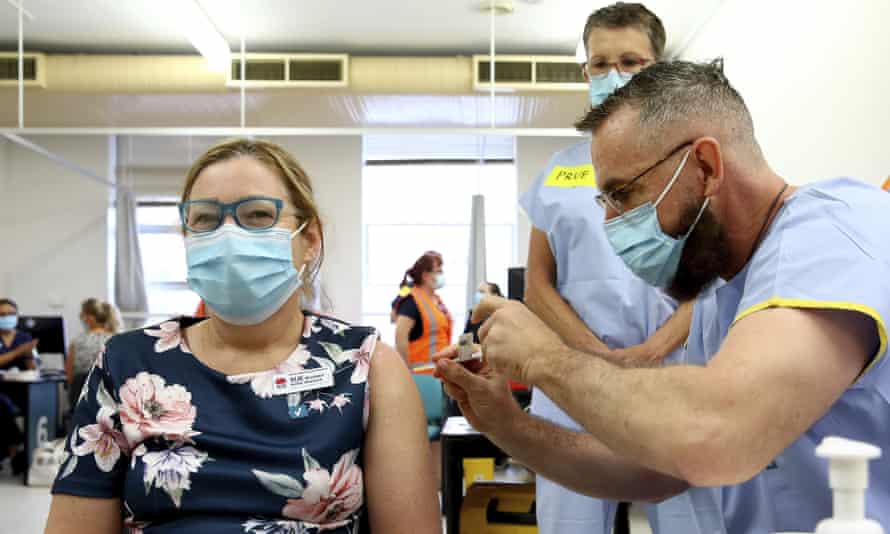Extract from The Guardian
We know vaccination is very effective in preventing serious illness, but whether it stops coronavirus transmission is another story.

Last modified on Sat 27 Feb 2021 06.02 AEDT
As Australia joins the worldwide Covid-19 vaccine rollout, researchers keep emphasising that while we know the various vaccines in use are strong at preventing hospitalisation and severe disease, it’s less clear how well they stop the virus spreading to other people.
While the term ‘Covid-19’ is often used interchangeably to describe both the virus and the disease, it is important to understand the distinction between the two.
The virus is Sars-CoV-2, while the disease that can cause symptoms such as coughing and fever is Covid-19. We know vaccinated people are protected in 63-95% of cases from developing Covid-19 and its symptoms, depending on the vaccine. All of the vaccines being rolled out are similarly highly effective at stopping severe disease.
The big unanswered question is whether vaccinated people can still pass Sars-CoV-2 on, even if they haven’t developed Covid-19. Researchers keep saying we need more data and monitoring of those who have been vaccinated to understand this. But with more than 200m doses administered worldwide, why are we still unsure?
The chair of epidemiology at Deakin University in Melbourne, Professor Catherine Bennett, says the studies needed to determine whether the vaccine stops virus spread are among the most difficult to do.
“Countries that have a highly vaccinated population are those where there was an emergency vaccine rollout due to the severity of the situation, they were just swamped with cases,” Bennett says.
“But that means they are usually also the countries where measures such as lockdowns have been stepped up. So it is hard to know what’s contributing to the stop of spread; the vaccines, or other measures such as lockdowns.
“The other aspect is that all the vaccine rollouts have focused on those most vulnerable and at risk, but most of those people are in places with lots of hygiene and protective measures already in place, such as hospitals and nursing homes. So again it’s hard to know how much the vaccine is contributing, because it’s being given in settings that are not being as challenged by the virus as the general population.”

The good news is that even if the vaccine doesn’t prevent transmission of Sars-CoV-2 in most cases, there is already evidence that a non-vaccinated person who catches the virus from a vaccinated person will develop a less severe disease.
It is believed the higher the level of exposure to droplets and aerosols from an infected person, the more aggressive the illness. If vaccinated people don’t develop symptoms, then the chance of it spreading via coughing and spluttering, where droplets containing high amounts of the virus are expelled into the air, will be greatly reduced.
“It takes time to actually follow up people and regularly test and check them for their viral loads,” Bennett said. “This work is being done, and data so far is showing that on average vaccinated people have lower viral loads compared to pre-vaccination, or unvaccinated people.”
That’s why ongoing monitoring of those who are vaccinated will be critical, the director of the Marie Bashir Institute for Infectious Diseases, Professor Tania Sorrell, and University of Queensland immunologist Professor Ian Frazer wrote in a review for the Australian Academy of Health and Medical Sciences published in December. Control of the pandemic will depend on “sustained and enhanced support for research and innovation to continue to deliver the knowledge and tools required to tackle the pandemic – even when case numbers are low,” they wrote.
Professor Gregory Dore is an infectious diseases physician at St Vincent’s Hospital in Sydney studying the long-term impacts of Covid-19 on patients admitted to hospital. He said the “gold standard” in vaccinology was to stop infection as well as disease, something known as “sterilising immunity”. The rubella and smallpox vaccines are examples of vaccines that provide this extreme level of immunity.
“But it’s not always achieved for all vaccines,” Dore said.
A lack of sterilising immunity is not always a problem, however. Polio has been virtually eradicated worldwide despite its vaccine not providing sterilising immunity.
Influenza vaccines don’t provide sterilising immunity, and depending on the vaccine type have an efficacy of between 40-60% in terms of preventing disease. But they have proven invaluable at preventing hospitalisation and the burden of other diseases in vulnerable populations. It has also been shown with flu that other aspects of the immune system, unrelated to the immune response triggered by the vaccine, can kick in to fill the gaps. This may prove to be the case with Covid, but more time is needed to see if that effect kicks in.
“There’s some confusion in terms of all these different sort of efficacy end points,” Dore said.
“The main efficacy end point studied in clinical trials, and what we know most about, is the prevention of symptoms, and prevention of severe disease and hospitalisation. The Pfizer and Moderna vaccines for example show a prevention of symptomatic infection efficacy of 95%. A lot of people assume that percentage also applies for the ability of those vaccines to prevent infections to others, but it does not.”
In fact, Dore says it’s extremely unlikely that any vaccine will achieve such a high level of infection prevention.
“I think it would be great if we could achieve 70 to 80% efficacy at this.”
And he said all indications are that’s the case for at least the Pfizer vaccine, and there are some signs AstraZeneca will considerably reduce infections as well.
Dore says overall the primary aim of any vaccination program has to be protecting people from severe disease. All of the Covid-19 vaccines being rolled out achieve this.
“The big question for Australia is what level of vaccination is required so we don’t use strict restriction levers like lockdown and quarantine all the time,” Dore says. “That’s a tricky balancing act and still a moving feast. Do you reduce harsh measures once most adults are vaccinated, even if kids aren’t yet? It’s not straightforward. As a country we’ll need to calibrate our response as we get more information. I think the next six months will tell us an enormous amount.”
No comments:
Post a Comment